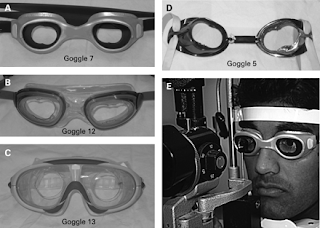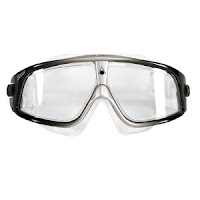
Beautiful spring flowers are blooming - be sure to protect your eyes from the pollen!
Here are just 3 suggestions for helping to keep your eyes healthy and comfortable during allergy season. Other options may be available for some people - have a full comprehensive eye exam to determine what may particularly benefit you.
1. Prescription anti-allergy eyedrops. You may be a candidate for a prescription anti-allergy eye drop. Special tests can be done at your next eye exam that determine whether you have an allergic response under your eyelids, or if you have other signs such as redness that would benefit from certain medication.
2. Daily disposable contact lenses. If you wear contact lenses, consider a daily disposable contact lens. Many allergy sufferers love having a supply of daily disposable contact lenses during allergy season so that they can dispose of their contacts at the end of the day and not have any pollen or protein buildup to irritate their eyes. Ask the doctor at your next contact lens exam if you are a candidate for daily disposable contact lenses (not available in all prescriptions).
3. Safe over-the-counter eyedrops. Please stay away from the allergy eyedrops that say "Get the red out". These over-the-counter eyedrops contain certain ingredients called vasoconstrictors that cause the red blood vessels to temporarily get smaller. However, there is a rebound reaction, and prolonged use can cause more redness. Some safe anti-allergy eyedrops that are over-the-counter are called "Alaway" and "Zaditor".

These eyedrops contain an antihistamine and mast cell stabilizer, which safely help to decrease the allergic reaction.
You may also benefit from safe over-the-counter rewetting drops that are preservative free. These eyedrops come in single-use vials and they help dilute the allergen and wash out any irritants.
Did you know that rubbing your eyes due to allergies can actually cause more astigmatism and blurry vision?
See clearly during allergy season and protect your eyes with these simple anti-allergy suggestions! Don't forget to schedule your eye exam for a comprehensive check of your eyes!
 Since 1988, over 7 million people have received complimentary vision care and eyewear through LensCrafters' charitable programs. In 1993, one day of the year was designated to help people in need receive no-charge eyecare and vision services.
Since 1988, over 7 million people have received complimentary vision care and eyewear through LensCrafters' charitable programs. In 1993, one day of the year was designated to help people in need receive no-charge eyecare and vision services.



 Picture: A Progressive lens design shows that the prescription for distance vision is at the top, while it progressively changes to a near prescription at the bottom. Depending on your prescription, it may be different at the top than what it is at the bottom!
Picture: A Progressive lens design shows that the prescription for distance vision is at the top, while it progressively changes to a near prescription at the bottom. Depending on your prescription, it may be different at the top than what it is at the bottom!



 Happy swimming!
Happy swimming!



